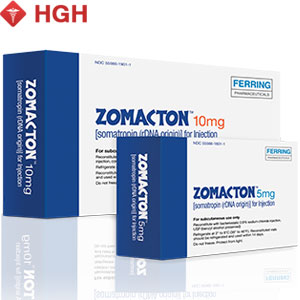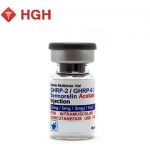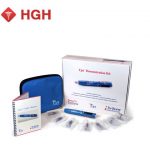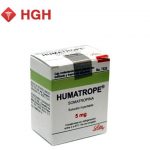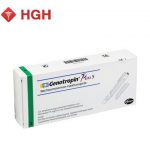HGH: what is it?
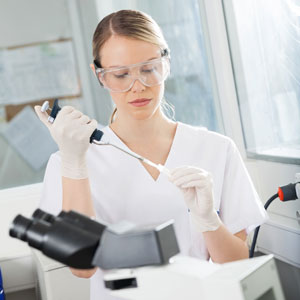 Human growth hormone (HGH) is a hormone produced and secreted by the anterior pituitary gland. Of all the hormones produced by the pituitary gland, it is the most abundant. Formation and secretion of growth hormone regulates hypothalamic releasing hormone and somatostatin. Both of these factors are produced by the hypothalamus. It secretion results in fluctuating blood levels that depend on such factors as gender, age, physical activity, sleep, stress, diet, steroids, fever and even the surrounding.
Human growth hormone (HGH) is a hormone produced and secreted by the anterior pituitary gland. Of all the hormones produced by the pituitary gland, it is the most abundant. Formation and secretion of growth hormone regulates hypothalamic releasing hormone and somatostatin. Both of these factors are produced by the hypothalamus. It secretion results in fluctuating blood levels that depend on such factors as gender, age, physical activity, sleep, stress, diet, steroids, fever and even the surrounding.
As a serum, HGH is a complicated mixture of various molecular forms, i.e. isoforms, containing the main 22-kDa form and minor isoforms like the 20-kDa form. More than that, HGH can also exist as a total of these isoforms (oligomers and dimers, building homo- and heterodimers). After the secretion into blood circulation, the 22-kDa lives only for 10-20 minutes.
HGH stimulates both linear growth and the growth of internal organs. It causes an increase in the number and size of muscle cells, liver, thymus gland, gonads, adrenal and thyroid glands. It has an impact on the metabolism of proteins, fats and carbohydrates. It inhibits the activity of enzymes that degrade amino acids, enhances insulin growth factors I (IGF I) in the serum to stimulate collagen synthesis in bone, skin and other organs and tissues. HGH increases glucose output in hepatic veins, increases gluconeogenesis (formation of glucose from non-carbohydrate precursors), reduces the absorption of glucose in the periphery, but also enhances lipolysis (fat breakdown), thereby, increasing the concentration of free fatty acids in the blood, which inhibits insulin action on a membrane glucose transport.
HGH is banned in the in- and out-of-competition, according to the part S2 of WADA’s List of Prohibited Substances and Methods.
Athletic performance: what is the effect of HGH?
Growth hormone accelerates linear growth. In adults, who are already fully formed and do not grow, growth hormone works as an anabolic, that is, it speeds up the metabolic reactions and contributes to a better assimilation of the elements that help in building muscle mass. Amino acid increases penetration into muscle, which causes hypertrophy (increased thickness) of muscle tissues. And if it was not enough of the HGH in the body before receiving it, then the improvement of health and mood is possible, and even a general improvement in memory and cognitive brain functions. HGH effects body fat, converting it into energy. Moreover, it strengthens tendons, connective tissue, cartilage, and bone. The anabolic functions of HGH are mainly interposed through IGF-I and contain improvement of general protein turnover and muscle synthesis. HGH can also be used together with other performance-stimulating drugs that influence anabolism and athletic performance indirectly.
Side effects of HGH: what are they
Side effects associated with the use of HGH may be different depending on the dosage of the drug and time characteristics of the organism. There may be headaches, increased intracranial pressure, nausea, edema syndrome, hyperglycemia (elevated blood glucose).
The effects of the long-term overdose: inhibition of thyroid function with the development of the symptoms of hypothyroidism (decreased production of tons of hormones by the thyroid gland), disorders of the pancreas with the possibility of developing diabetes, increased growth of not only the soft tissue, and cartilage and bone, resulting in the consolidation of the devil face, increasing the size of the upper and lower extremities.
Is it possible to test HGH?
The danger that HGH doping can influence the law of fair play and the health of athletes, has always worried anti-doping and sport authorities. So the method to detect it was of a great importance. Doping control test on HGH was considered an impossible task for many years. However, it was recently shown that at least two independent approaches allow to establish whether the athlete applied it or not. These are the “isoforms test” and the “markers approach”.
At the 2004 Olympics in Athens, the first blood test was used to identify HGH, on the creation of this test more than 10 years have been spent, and about 6 million dollars. It was the Isoform Differential Immunoassays (the Isoform Test). It was applied at the 2006 Winter Olympic Games in Torino, Italy, the 2008 European Football Championship in Austria and Switzerland, the 2008 Summer Olympic Games in Beijing. Nowadays, all WADA certified labs test for HGH using the Isoform Test.
For the London Olympics 2012 and Paralympic Games, a completely new Biomarkers Test (the “markers approach”) was introduced. Several research groups worked in collaboration to complete the study on the determination of the Decision Limits (DLs) for this test. The use of this test will be resumed in some WADA certified labs in future.
Were there any precedents of HGH doping detected?
Yes, there were. Starting from 2010, there were 10 cases reported about the aversive use of HGH detected by the Isoform Test. Furthermore, two athletes were detected with the help of the HGH Biomarkers Test at the 2012 London Paralympic Games.
What is the matrix for HGH detection?
Blood serum is used for detecting HGH doping. It is obtained by the centrifugation in the labs of blood taken in special tubes with an inert polymeric serum separator gel and a clothing activation factor.
The Isoform Differential Immunoassays (the Isoform Test): what is this?
The human body usually has a relative fixed ratio between the two different isoforms of the human growth hormone, while the artificial growth hormone has only one isoform. The athlete breaks this ratio consuming HGH in favor of one of the isoforms. This test measures the amount of 22 kDa and the overall level of HGH in blood. Typically, the ratio of 22 kDA to the general level of HGH is 0.6. If this figure is greater than 1, it is considered that the athlete is abusing HGH.
The Biomarkers Test (the “markers approach”): what is this?
HGH influences the expression of numerous different proteins that can work as biological biomarkers of HGH presence. They can be in the liver as IGF-I , or in soft tissue collagen turnover, like the N-terminal peptide of procollagen type III (P-III-NP). This test is based not on the identification of HGH per se, but to determine the effects that it entails. Oddly enough, but among the specific biomarkers, the main proved to be IGF-1, insulin-like growth factor. Since IGF-1 level increases in direct proportion to the amount of HGH administered.
Can we rely on HGH tests?
Both of these tests have been constantly under research by international independent experts specializing in HGH and IGF-I fields, immunoassay, endocrinology, pharmacology, analytical chemistry, anti-doping, laboratory work. The results are issued in international scientific magazines.
The case FIS vs Veerpalu has confirmed the reliability of the Isoform Test in the Court of Arbitration for Sport (CAS) in 2013. Due to the criticism of the CAS Panel as to the statistical procedure initially used to determine the test’s DLs, new statistical analyses were made on an increased amount of HGH doping control data (samples of athletes treated under real doping control conditions of sample taking, transporting, storing and analyzing; this includes standard analytical protocols and instrumentation) by two independent statisticians’’ teams. The results obtained were issued in an independent scientific magazine specializing in HGH and IGF-I study.
The corrected DLs have been united into a new edition of the Guidelines on hGH Isoform Differential Immunoassays for anti-doping analyses that can be found on WADA’s site. These Guidelines proceed providing direction on the sample pre-analytical preparation for the testing, the process of testing itself and the interpretation and reporting of the results.
If you want additional info on the process followed to define the test’s DLs, you can contact Hanley JA et.al. “hGH isoforms differential immunoassays applied to blood samples from athletes: decision limits for anti-doping testing”. Growth Hormone & IGF Research, 2014.
The validity and scientific efficacy of the Biomarkers approach has been reported in numerous scientific periodicals for over a decade. Placebo-controlled recombinant recGH usage research fulfilled in Europe and Australia has revealed the IGF-I and P-III-NP increase substantially after recGH administration in a dose-dependent way. These markers have been assessed for a number of confounding factors that could affect the scores of the discriminant functions, comprising gender, ethnicity, age, diurnal and day-to-day variation, exercise, bony and soft tissue injury, body habitus (physique), and sporting discipline. However, before resuming its administration in WADA-certified labs, the research on the defining of the DLs for the new assays will be also entrusted to independent review and reporting in an international scientific magazine.
Are the Isoform Test and the Markers Approach additional?
The both tests are additional in nature and are necessary for HGH detection. The Isoform Test defines the ratios between HGH isoforms up to 24-48 hours after recGH use. The Biomarkers approach is based in evaluating the risen synthesis of 2 biological markers of HGH bioactivity – IGF-I and P-III-P. It might not detect the first phase of recGH administration. However, it can do this later and for a longer period of time than the first test.
HGH releasing factors: what are they and can they be detected?
GH-releasing factors comprise the GH Releasing Hormone (GHRH) and its analogues, GH secretagogues (GHS) and GH-releasing peptides (GHRPs). These factors cause the secretion of endogenous HGH by the pituitary gland. So they can be used instead of recGH to obtain the same effects as with HGH doping, and probably to hide detection of recGH administration with the Isoform Test. Nevertheless, anti-doping labs have created mass spectrometry-based methods for their detection. There analytical findings have been informed after their detection in doping control samples. Furthermore, their administration can be also detected by the indirect Biomarkers approach.
What is the most favorable time for HGH testing of athletes?
The same as with other doping tests, HGH testing need to be based on the use of ‘Intelligent Testing’ tactics, the aim of which is to make an efficient and effective usage of the existing testing resources. HGH as doping is usually used by athletes for a considerable period of time to obtain some positive results (on the contrary to other doping means like stimulants that have an instant effect). Furthermore, athletes are aware of the fact that they can be checked during the competitions.
So, it is better to implement HGH doping testing at out-of-competition time, using intelligent, non-notice and unpredictable testing. It is also recommended to test suspected athletes due to some intelligence information (for instance, info about doping routine), or due to some unexpected and dubious achievements, or due to some prior test results. It is also better to use both the Biomarkers approach and the Isoform Test because of their complementary nature in determining HGH doping.
Urine test: will it be used for HGH detection?
The major international experts state that the best matrix for HGH testing is the blood matrix as urine contains too little concentrate of HGH (less than 1% than that found in blood). In addition, the allocation of growth hormone in the urine is a complicated process, which is characterized by considerable variability and is still poorly understood.
The experiments made to create urine-based methods of HGH detecting failed. Nevertheless, WADA proceeds trying to develop such tests in collaboration with research teams, using new ideas and tactics.
Blood samples: can they be stored?
It is possible to store blood serum to preserve its substance and to use this samples for testing and detection. Studies proved that HGH is stable in blood if the process of freezing is done correctly (you can find the necessary guidelines on this procedure in the hGH Guidelines for Assay Pre-analytical Procedure, section 6.2).
WADA emboldens Anti-Doping Organizations under the World Anti-Doping Code to keep blood samples if possible (for instance, unexpected results, intelligence available to the anti-doping organization, etc.) Keeping serum for the possible testing has an important deterrent effect.
The 2015 World Anti-Doping Code allows to open a disciplinary production within ten years from the date of anti-doping rules’ violation.
